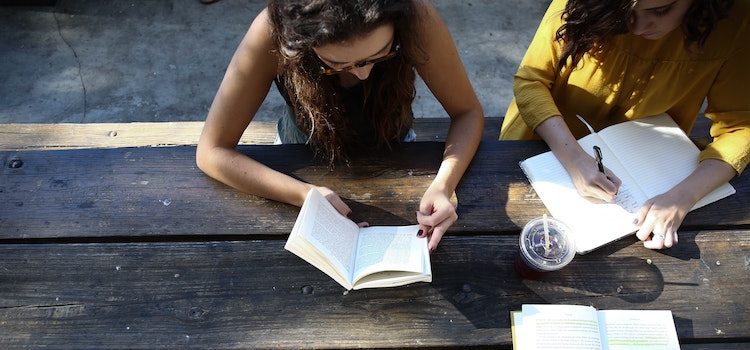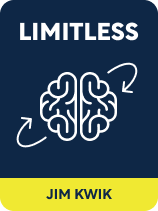

This article is an excerpt from the Shortform book guide to "Limitless" by Jim Kwik. Shortform has the world's best summaries and analyses of books you should be reading.
Like this article? Sign up for a free trial here .
What are some effective study techniques you can implement to learn anything? How can you take better notes?
Limitless author Jim Kwik shares six effective study techniques to help you accomplish limitless learning in any area of life. He also provides three tips for taking good notes.
Keep reading to learn effective study techniques and note-taking methods.
How to Study and Take Good Notes
It’s important to get yourself into the proper mindframe to learn and work—and to motivate yourself to do so. However, Kwik insists, those two things won’t get you very far without a third learning component: effective study techniques.
You could think of it this way:
- Mindframe is the what: “What am I capable of?”
- Drive is the why: “Why do I want to do these things?”
- Technique is the how: “How can I actually accomplish this?”
6 Effective Study Techniques
The first strategy Kwik presents is a series of steps that prepare you to learn and maximize your retention.
Kwik’s strategy comprises six effective study techniques:
1. Clear your mind. There are three things you must let go of in order to fully focus on the topic at hand: What you think you know about that topic, anything unrelated to what you’re studying—including upcoming obligations or concerns that might distract you—and your own perceived limitations.
(Shortform note: Kwik’s advice to clear your mind strongly resembles the old Zen proverb of the empty cup: Just as you can’t add tea to a cup that’s already full, you can’t add new information to a mind that’s already full of old ideas. Therefore, forgetting what you think you know is a learning tip that’s well over a thousand years old.)
2. Involve yourself. Learning is an active process, so figure out how you can become more involved in your own learning. Perhaps you could take notes, discuss the material with your teacher, or work through some exercises on your own time.
(Shortform note: We’ll discuss active learning in greater detail in the section “Train Your Memory.”)
3. Choose to be interested. Get yourself into the right mental and emotional state to learn; consciously choose a state of joy, curiosity, and interest. One easy way to practice State is to trick your body into thinking that you’re excited—lean forward in your seat, change your breathing, or make the face you’d make if you were completely enthralled.
(Shortform note: You can use all sorts of physical cues to trick yourself into the mental state you want at any given time. For example, studies show that a fake smile can put you into a genuinely better mood.)
4. Relay what you’ve learned. Study new information with the intent to teach it to somebody else—actually do teach it to another person, if possible.
(Shortform note: Studies show that teaching others helps you to retain what you’ve learned. In the linked study, students who taught others didn’t do significantly better in the short term than those who only learned the material themselves; however, when tested again a week later, those who had taught the material to other students remembered a great deal more of it.)
5. Schedule your study times. Get a calendar and enter times to study, just like you’d enter important meetings or appointments. This will help you to develop good, regular study habits.
(Shortform note: Self-help experts frequently say that it takes about 21 days to form a healthy new habit. However, in reality, it might take much longer. One study showed that it took an average of 66 days (and, in rare cases, as long as 254 days) for a new behavior to become a habit. Therefore, it’s important not to get discouraged when your new study practices don’t feel habitual after just a few weeks.)
6. Repeat what you’ve learned. Periodically going over your notes—or just thinking about what you’ve learned—will help you to recall that information when you really need it. One simple way to review is to set aside a few minutes before you begin a study session, and use that time to think about what you learned in the previous session.
(Shortform note: Rote learning (also called rote memorization) involves repeating facts until they stick in your mind, which is generally considered to be an ineffective study method. In other words, rote learning uses only this final step, while Kwik’s method uses all of them.)
3 Note-Taking Tips
Kwik believes that, in addition to effective study techniques, good note-taking is a crucial part of any attempt to learn. Therefore, he offers these three guidelines for taking notes:
- Specify. Before you start any activity where you’ll be taking notes (studying, listening to a presentation, or what have you), consider what you’re hoping to get out of that session. Ask yourself what, specifically, you’re interested in learning from it.
- Filter. Keeping your goal for the session in mind, filter through the information you’re getting and look for what’s relevant to that goal. It’s impossible to write down everything, so filter through the information and pick out what’s important to you.
- Highlight. Review your notes after the session and highlight the most valuable information. Add notes as needed to make that information clearer, or make an outline of the key points—in essence, take notes about your notes.
| There are many different theories about how to take effective notes. The Cornell Note Taking Method, for example, offers much more specific advice than Kwik’s general guidelines. The Cornell Method is based on the so-called “5 R’s of note-taking:” Record: Take notes as usual about the lecture, meeting, etc. Reduce: As soon as possible after the event, create a separate column and summarize each of your notes in as few words as possible. Recite: Using only that new column, repeat what you learned during the lecture or meeting. Put the ideas into your own words. Then use your full notes to verify that what you said was accurate. Reflect: Think about what you’ve learned. What are your opinions about this new information? What connections can you draw to things that you already knew? Review: Go over your notes once a week to refresh your memory. |
With effective study techniques and note-taking skills, you can maximize your learning potential in all areas of life.

———End of Preview———
Like what you just read? Read the rest of the world's best book summary and analysis of Jim Kwik's "Limitless" at Shortform .
Here's what you'll find in our full Limitless summary :
- Jim Kwik's guide to meta-learning: learning how to learn
- How to quickly and effectively learn about any topic
- How to use your new knowledge to its maximum potential






